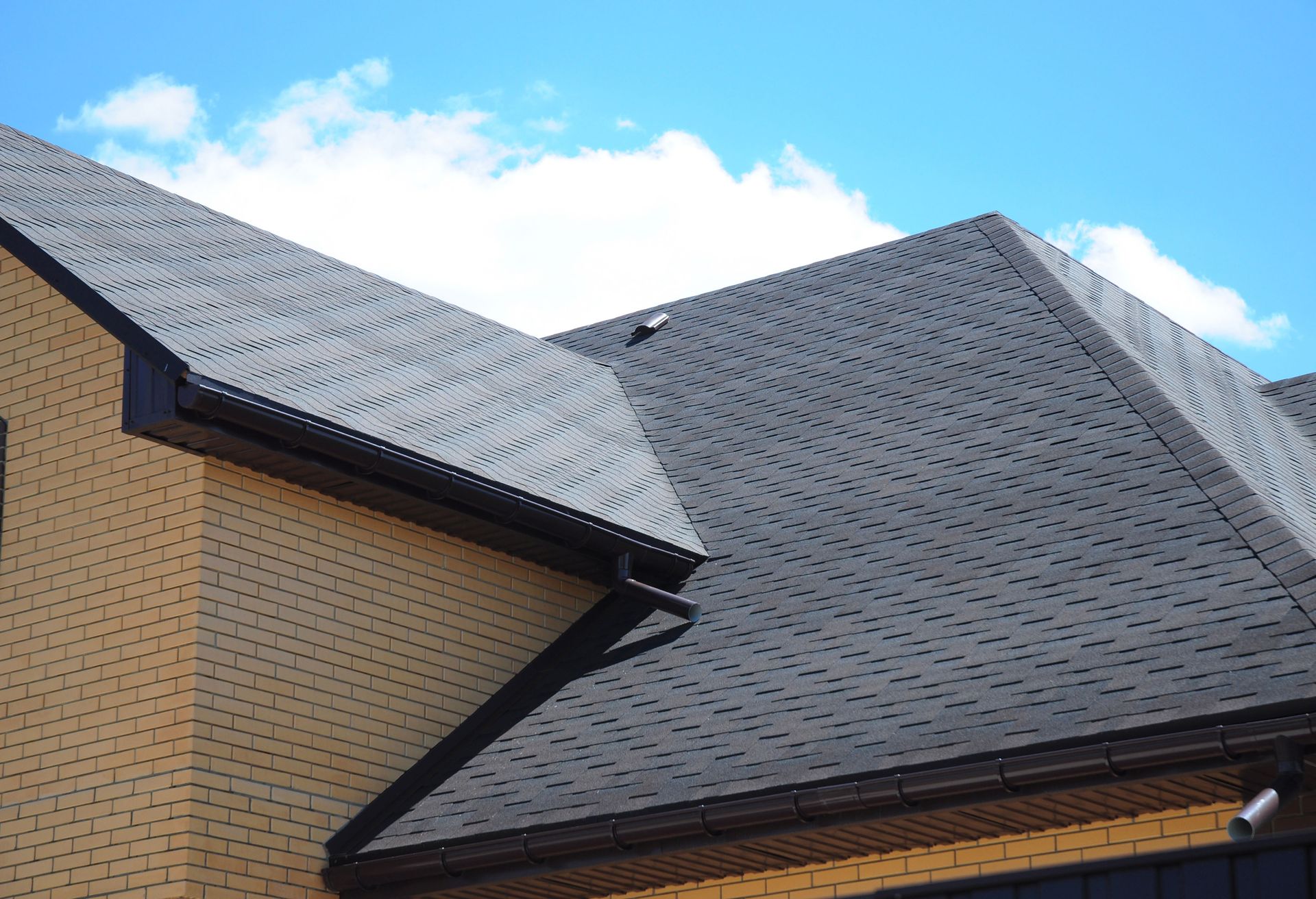September 9, 2025
The roof is one of the most important parts of any home, providing shelter and security from the elements. While small issues can often be solved with minor fixes, there are times when a full roof replacement is the only long-term solution. In this article, we'll examine the major signs that suggest it's time to stop repairing and start planning for a new roof.
Recognizing these signs not only protects your investment but also safeguards the safety and efficiency of your home. Ignoring them often leads to escalating repair costs and worsening damage. By the end, you'll have the knowledge to determine whether repairs will suffice or if a full roof replacement is the smarter choice.
Frequent Leaks and Water Damage
Recurring leaks are one of the clearest warnings that a new roof is necessary. Even after multiple repairs, persistent leaks often point to deeper structural problems. Ongoing water intrusion can rot wood, weaken supports, and compromise your home's overall stability. Choosing a roof replacement prevents further structural damage and ensures lasting protection.
Leaks can also create health hazards by fostering mold and mildew. Mold exposure can trigger respiratory problems, allergies, and other health concerns, particularly for vulnerable family members. According to BCC Research, 94% of roofing projects in North America are roof replacements, showing that most homeowners ultimately choose this route to address underlying issues. A full replacement allows professionals to identify and correct root problems that repairs simply can't solve.
Beyond immediate damage, leaks reduce your home's efficiency by allowing moisture into insulation and attic spaces. Wet insulation loses effectiveness, driving up heating and cooling costs. Over time, this hidden damage can equal or even exceed the cost of a new roof. A timely roof replacement stops the cycle, protecting both your home and your health.
Shingle Damage and Deterioration
Damaged shingles are another sign that replacement may be necessary. Cracked or curled shingles allow moisture to penetrate, leading to leaks. Curling shingles may indicate poor ventilation, age, or defective materials. Missing shingles expose the roof deck to the elements, further weakening the structure.
Another red flag is granule loss. Granules protect shingles from UV damage, and their absence signals the roof is nearing the end of its life. If you notice granules in your gutters, it's time to consider a roof replacement to restore full protection and preserve your home's value.
Shingles also act as your home's first line of defense against wind. When they loosen or tear, strong gusts can strip sections of your roof and expose vulnerable layers. Repeated repairs in scattered areas may leave your roof uneven and less weather-resistant. A full replacement provides a uniform barrier that performs consistently across the entire surface, offering peace of mind during harsh weather.
Age of the Roof
Every roofing material has a lifespan. Asphalt shingles typically last 20 to 30 years, while metal roofs can last 50 years or more. Even well-maintained roofs eventually wear down from exposure. If your roof is near or past its expected age, planning for a replacement is wise.
Climate also plays a role. Extreme weather, from heavy snow to intense heat, accelerates roof deterioration. Once your roof's warranty expires, replacing it before serious problems occur can save on costly repairs and give you the security of a new warranty.
It's also worth noting that older roofs may not meet current building codes or energy efficiency standards. A roof replacement gives homeowners the opportunity to upgrade materials, improve ventilation, and meet local regulations, ensuring compliance and boosting long-term performance.
Structural Issues
Structural problems often demand more than repairs. A sagging roof deck, for example, indicates weakened supports that could eventually collapse. Replacing the roof allows contractors to correct these issues and reinforce your home's structural integrity.
Similarly, deteriorated sheathing undermines the entire roofing system. A roof replacement provides the chance to remove damaged sheathing and install a new, solid foundation. If your home's foundation has shifted, replacement also enables realignment and reinforcement for long-term stability.
In addition, hidden issues like rusting nails, loose fasteners, or damaged underlayment can spread silently beneath the surface. Repairs may cover up the symptoms without resolving the cause. A full replacement addresses these concealed problems in one comprehensive project, giving homeowners confidence that every layer of the roof is strong and reliable.
Rising Energy Bills
If you've noticed rising utility costs, your roof could be to blame. Poor insulation lets heat escape in winter and infiltrate in summer, making your HVAC system work harder. Replacing your roof with modern materials improves insulation, reducing energy use and lowering monthly bills.
Ventilation is another critical factor. Without proper airflow, your attic traps heat, which increases cooling costs. A new roof with updated ventilation systems enhances efficiency and keeps your home comfortable. By eliminating air leaks and gaps, a replacement ensures better thermal performance throughout the year.
Energy-efficient roofing materials also contribute to long-term savings. Reflective shingles or cool roofing options deflect sunlight, reducing heat absorption. In warmer climates, these can help lower attic temperatures by double digits, significantly reducing reliance on air conditioning. Over the life of the roof, these savings can add up substantially, making a replacement both a protective and financial investment.
For homeowners thinking ahead, pairing a new roof with solar panels or other renewable options is increasingly popular. Installing these technologies during a roof replacement minimizes disruption and helps maximize energy efficiency from day one.
Aesthetic Considerations
Your roof plays a big role in curb appeal. An outdated or faded roof can make the entire home look worn down. Replacement offers the opportunity to update with modern styles and colors that match your home's design.
Neighborhood standards may also come into play. A mismatched or deteriorated roof can lower property values and even cause disputes with homeowners' associations. A fresh, cohesive design improves neighborhood appeal and strengthens resale potential. Buyers often view a new roof as a sign of reliability, making your home more attractive on the market.
In addition to aesthetics, replacing your roof can align with eco-friendly goals. Many modern roofing systems are recyclable or designed with sustainability in mind. This adds another layer of value for homeowners conscious about their environmental footprint and can even make your property more appealing to buyers who prioritize green living. Even subtle changes, like choosing lighter shingle colors to reflect heat, can make a noticeable difference in both appearance and energy use.
A roof replacement is more than an upgrade—it's an investment in your home's safety, efficiency, and value. By watching for signs like frequent leaks, shingle damage, aging, structural issues, rising energy costs, and declining aesthetics, homeowners can make timely decisions that prevent greater problems.
Delaying replacement risks escalating repair costs and serious structural damage. With 94% of roofing projects in North America already being roof replacements, according to BCC Research, homeowners clearly see the value in addressing issues thoroughly rather than patching them endlessly.
Ultimately, a roof replacement prioritizes the well-being of the home and enhances its resilience against the elements. Homeowners who recognize and act on the signs described herein can look forward to a safe, efficient, and attractive roof that protects their family for decades. By taking this step, you also strengthen your property's market value and gain peace of mind knowing your home is prepared for whatever weather comes next. If you're noticing these warning signs, contact Portage Exteriors LLC today to discuss your roof replacement options and take the first step toward securing your home's future.



